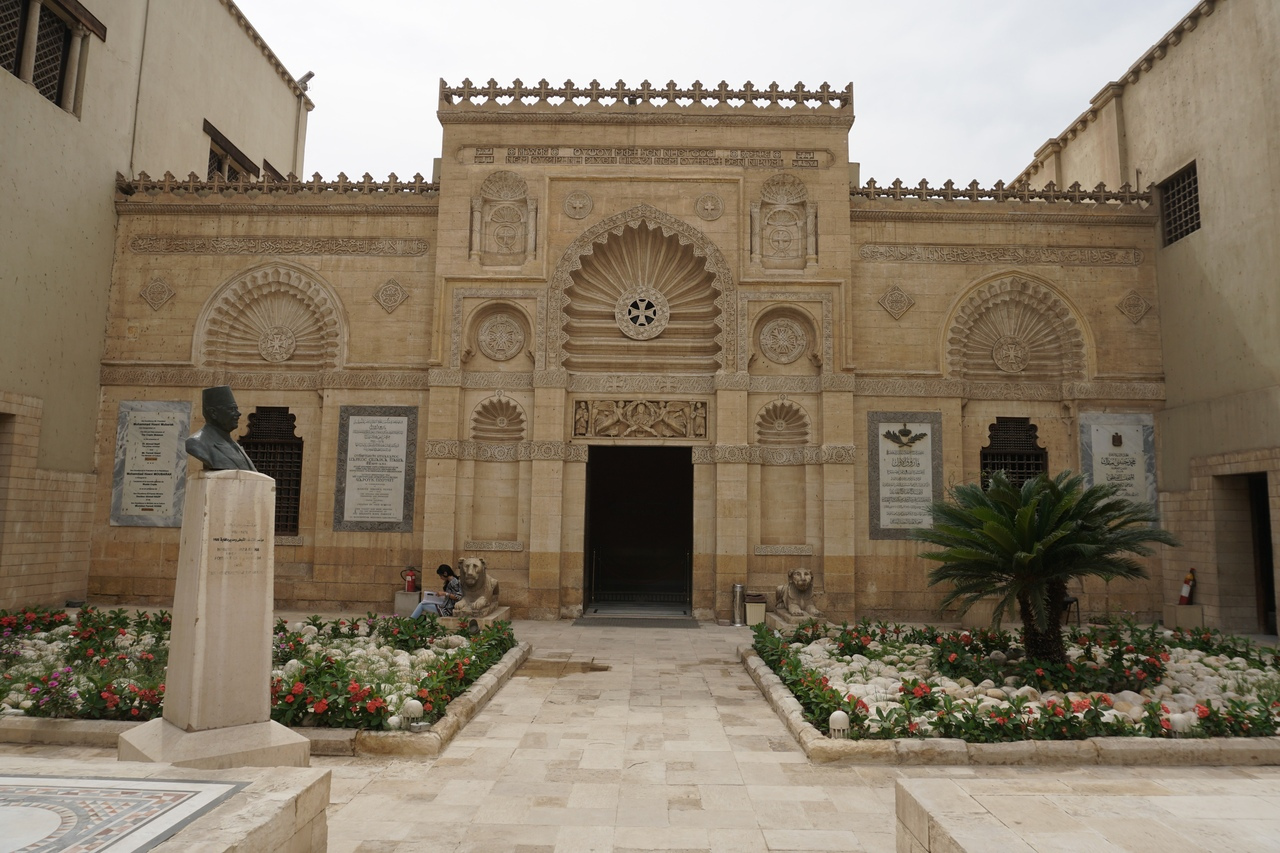Coptic Museum Cairo: Tours, Tickets, History, Exhibits
4.4 / 5 177 ReviewsAddress
Address: Mari Girgis st, across from the metro station
Accessibility
not wheelchair friendly
Historical importance
The site where the present museum stands is very important from the historical point of view as it is intimately bound up with the beginning of Christianity in Egypt. The museum is situated within the walls of the considerable Roman fortress of Babylon, the most famous and largest of the remains of the Roman Empire in Egypt, and which most probably was built by the Emperor Trajan at the beginning of the 2nd century on the ruins of the older fortress attributed to the Persians and bearing the same name. It is also stated that the Emperor Arcadius added to the building in the 4th century. A considerable part of the original buildings of the fortress and their towers can still be seen.
Tremendous groups of Christian antiquities have been gathered and stored in one of the halls neighbouring to the old Hanging church at Old Cairo. Morcos Simaika Pasha, a zealous Coptic notable, decided that a special building should be erected to house these important historical relicts, and through his continual efforts, the Coptic museum has been established in 1910. It was intended to receive any object or document which could be helpful for the study of the history of Christianity in the Nile Valley. The founder was assisted in this by some Coptic notables and friends of art of different creeds and nationalities.
The first museum
The first buildings were established on a plot of land belonging to the Coptic Patriarchate, which was kindly put at the disposal of the founder by the Patriarch Cyril V, who also permitted the use of ancient woodwork and other embellishments, such as ceilings, mushrabeias, marble columns, fountains and mosaics brought from the ruins of ancient mansions belonging to the Coptic community.
The Coptic museum remained the property of the Coptic Patriarchate until 1931. Then the government, recognizing its great importance as representing a definite period in the history of Egypt, took urgent measures to attach it to the state. In 1937, owing to the steady growth of the collections, a new wing was built in the same style of the old buildings. In 1939, the splendid Coptic collection of the Egyptian museum was moved to the museum in Old Cairo.
The Old Wing
It consists of 2 floors with 14 halls on each of them and overlooks a small garden decorated with capitals. The old wing was built by incorporating into its structure mashrabeya windows, ceilings and glazed tiles taken from abandoned Coptic houses.
The museum has eight sections arranged in a chronological order to let visitors appreciate the development of the Coptic art through the centuries. We find the following sections: sculpture & frescoes; ancient textile; icons, ivory & bone; woodwork; metalwork; manuscripts; pottery & glass; Ethiopian acquisitions.
Coptic museum possesses a large collection of stelae which were unearthed from various sites in Egypt. The majority of the stelae are in limestone inscribed with Coptic texts, consisting of prayers. Here Coptic writings, symbols, personal names and names of cities & villages can be found.
Coptic pottery flourished until 13th century, large jars of various kinds were used in great number in monasteries and churches. A large collection of lamps is now exhibited in the museum. Some of them are made of glazed blue or green faience. Beside we will find some flasks called St. Menas. Piligrims to St. Menas church were used to take them when visiting the church.
The collection of glass in the museum is small although the glass industry flourished in Coptic era, especially in Wadi el-Natron convent. In the museum we will find some goblets in opaque glass, perfume bottles, some candlesticks, lamps and transparent glass cups from a late period.
Library
The museum possesses a splendid library furnished with many wooden cupboards, fabricated with panels inlaid with ivory in such an artistic way, corresponding to the atmosphere of the period. The Copts fondness and interest in acquiring manuscripts and libraries are old traditions handed down from their ancient ancestors, Pharaohs. There was hardly a monastery or a church without a library enriched with manuscripts of a various kinds. In 1931 the government took over the museum as state property and equipped it with a special library which in addition to the important manuscripts scattered in monasteries & churches, was to contain a collection of modern works on Egyptian and Coptic history. To house this library a spacious wing in the south end of the museum was established. Now the library contains more than 6000 volumes of manuscripts and printed books dealing with all branches of knowledge and history in many languages.
Nubian Antiquities
In 1963-64 during Abu-Simbel salvage campaign, a Dutch mission excavated a site about 3.5 km to the northeast of the temple known as The place of Abdallah, the site included buildings covered with sand to more than half of their height. The mission found a church on the walls of which 23 frescoes were still visible. These 23 frescoes covered 30 square meters on the walls of the church were saved by a team of Egyptian experts. As the frescoes are of priceless interest it was decided to exhibit them selectively in the museum in a special room with other Nubian antiquities. Eight frescoes were chosen the most important among them are the fresco of the Nativity, Christ in a small mandorla, the Horseman.
Among the other Nubian antiquities in this room are pottery and manuscripts on parchment, linen and leather. The most interesting is a small book of 17 pages in Nubian Coptic. On one of its pages a drawing of a crocodile, the ancient Egyptian god Sobek, in the margin shows the continuity of the influence of paganism in Christian Nubia.
